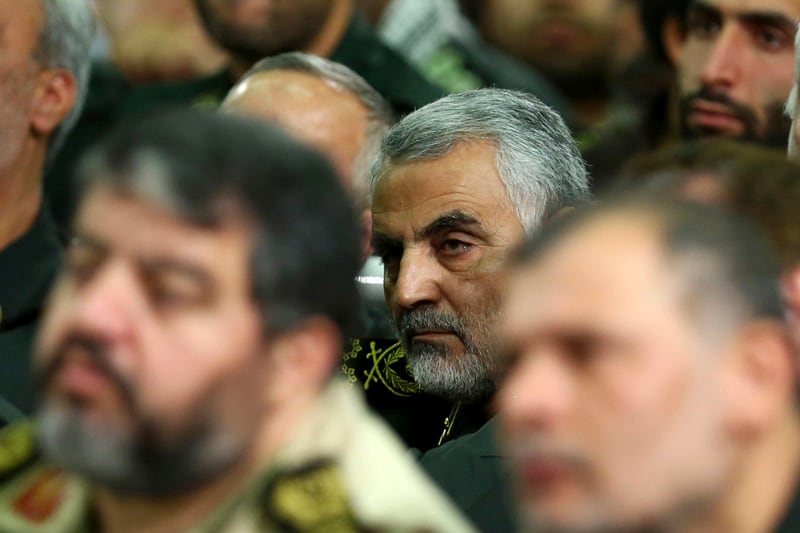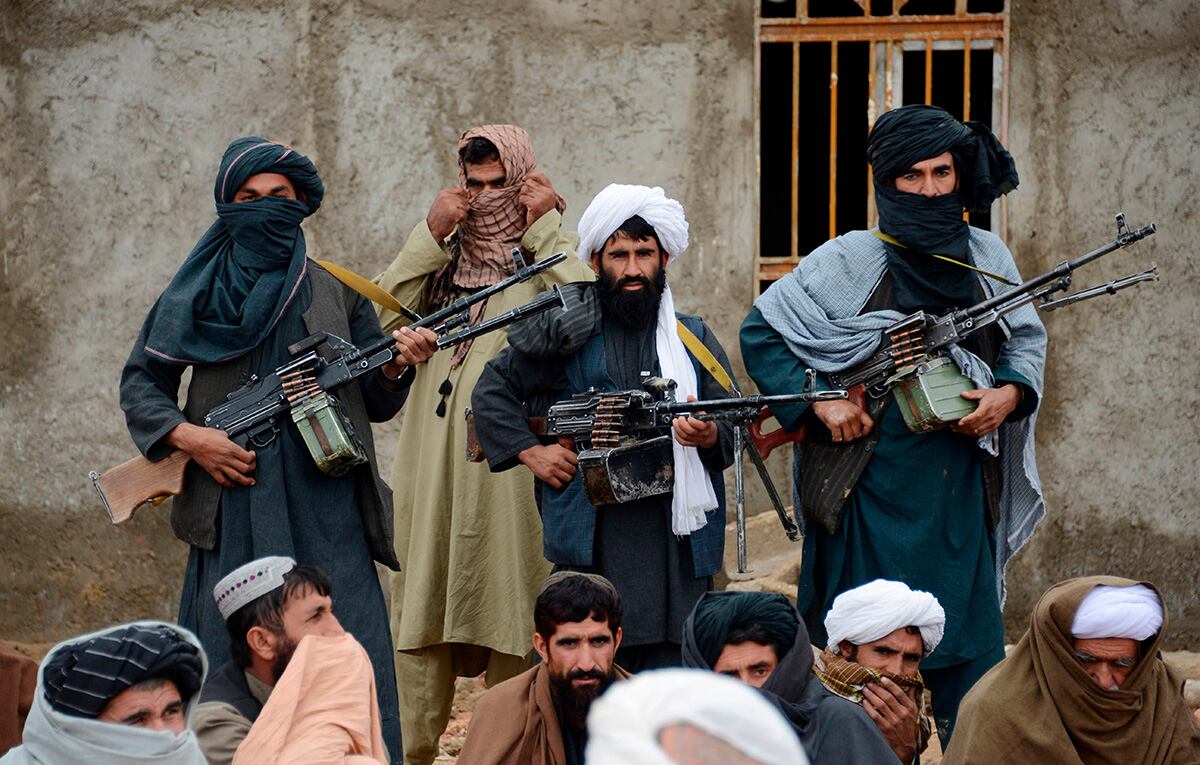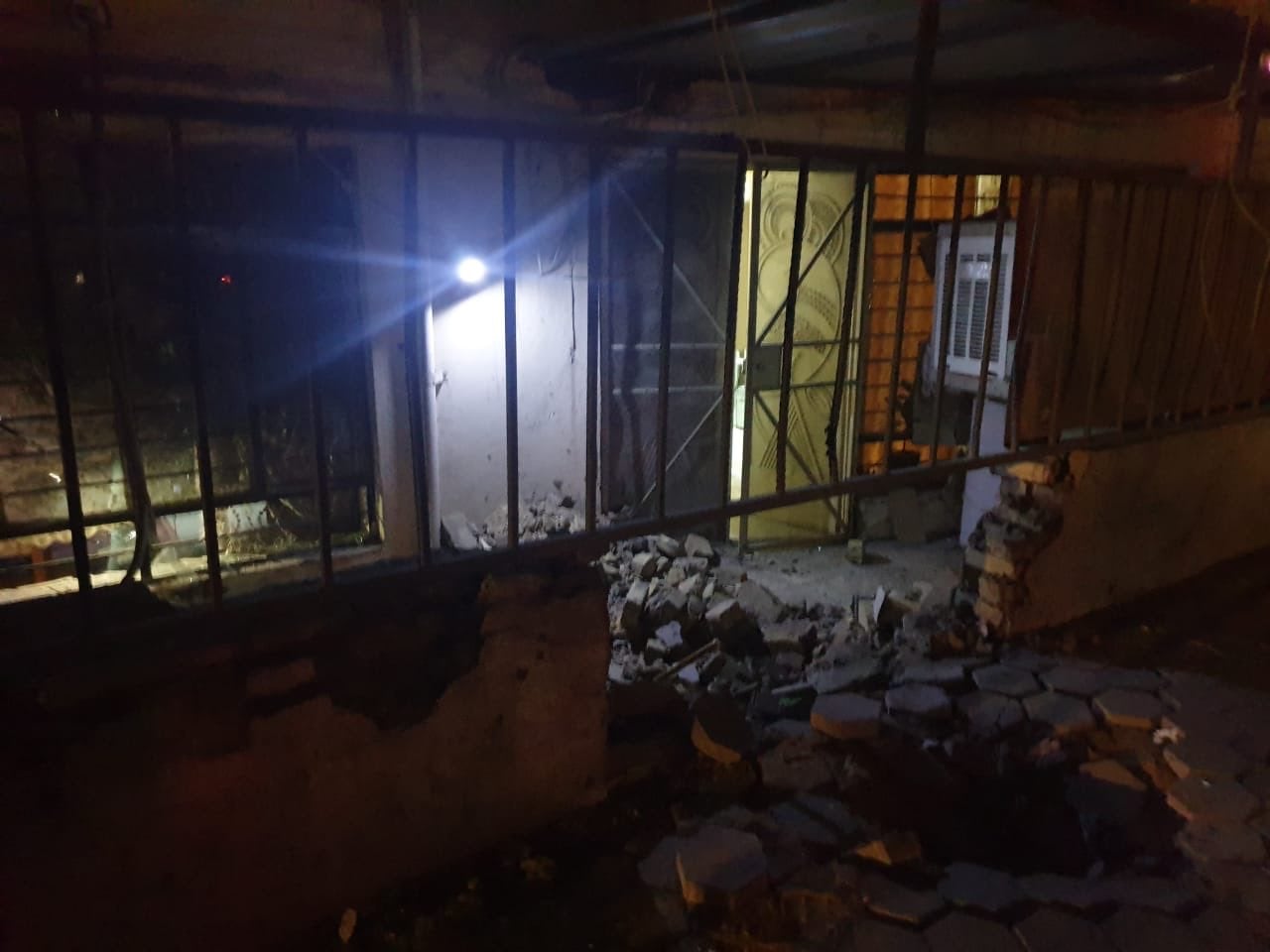As the U.S. looks to withdraw its troops from Afghanistan, recent tensions coupled with Iran’s history of meddling in the country could jeopardize talks between the U.S. and the Taliban to end the 18-year long conflict.
U.S. military intelligence assessments dating back to 2010 suggest Iran’s elite paramilitary unit, the Quds Force, has track record of providing training and lethal arms to the Taliban. The list includes portable shoulder-fired air-defense systems known as MANPADS.
While the level of that support from Tehran does not appear to be a game changer on the battlefield, the recent succession of the former head of Iran’s Quds Force branch in Afghanistan, Brig. Gen. Esmail Ghaani, to be the top commander of the elite Iranian unit could amplify Iran’s destabilization efforts in Afghanistan.
Ghaani was chosen by Iran’s Supreme Leader Ayatollah Ali Khamenei to lead the Quds force following a Jan. 2 airstrike by the U.S. that killed Iranian Gen. Qassem Soleimani.
Phillip Smyth, a research fellow with the Washington Institute, told Military Times that the new Quds Force commander could be a spoiler for peace prospects in Afghanistan.
Following Soleimani’s killing, Iran is looking to send a “signal to say we are going to look eastward," Smyth said.
Flanked by flags of its various proxy forces, a recent IRGC press conference included the banners of Fatemiyoun Division, an Iran-backed Afghan Shia group fighting in Syria, and the emblem for Liwa Zainebiyoun — a Shia Pakistani Iran proxy.
The Islamic Revolutionary Guard Corps has also for years trained and recruited from Afghanistan’s Shia Hazara population for use in its nebulous network of militant and proxy forces across the region.
Analysts and national security experts have expressed concern over the Taliban peace talks following the U.S. strike that killed Soleimani, and Iran’s retaliatory ballistic missile strike against U.S. forces at two air bases in Iraq.
But Iran’s sway over the Taliban is minimal. A Taliban spokesman told Voice of America that he did not expect recent tensions between Tehran and Washington to impact the negotiations.
“The developments will not have negative impact on the peace process because the (U.S.-Taliban) peace agreement is finalized and only remains to be signed (by the two sides),” Suhail Shaheen, a spokesman for the Taliban’s negotiating team, told VOA.
In January, Reuters reported that Secretary of State Mike Pompeo accused Iran — without providing evidence — of undermining U.S. talks with the Taliban.
“The Taliban’s entanglement in Iran’s dirty work will only harm the Afghanistan peace process," Pompeo said, according to Reuters.
Iran has provided military aid to the Taliban, but U.S. intelligence reports, obtained by Military Times through a government records request, displays mixed reviews on the level and severity of that aid.
The majority of the intelligence reports and assessments spanned 2010 to 2012, at a time when the U.S. had nearly 100,000 troops on the ground. The reports provide a glimpse into Iran’s shadowy dealings with the Taliban — a militant group that has long been at odds with Tehran.
Iran’s support to the Taliban is minimal, often aimed at harassing coalition forces and as an effort to stymie progress in Afghanistan. But the underlying relationship between Tehran and the Taliban is not enough to sway the balance of power in Afghanistan in favor of the militants.
“Iranian support to the Taliban is tempered by their realization that Taliban control of Afghanistan is not in Iran’s best long term interest due to a history of ideological differences. Instead, lethal aid and training are used as a balancing force to counteract increased Western influence,” a 2012 U.S. military intelligence assessment reads.
U.S. military intelligence assessments detailed that Iran’s Quds Force shelled out cash for every American soldier killed or for every U.S. military vehicle destroyed.
A report dated Oct. 15, 2010, from the Theater Intelligence Group based out of Bagram Air Base, said that Iran’s Quds Force was paying $1,000 for every U.S. soldier killed and $6,000 for American vehicles destroyed.
The report also highlighted that Iran was funneling small arms and SA-7 shoulder fired air-defense systems to the Taliban through a former Afghan security official.
In some instances, IRGC officials helped transport groups of 10 to 20 Taliban fighters to various locations in Iran for training on MANPADS, according to an Oct. 2010 report.
The Quds Force “usually asks the Taliban commanders to send their best fighters for the training, likely due to the more advanced training involved in learning MANPADS systems or possibly to allow these fighters to become future trainers of other Taliban fighters inside Afghanistan,” the Oct. 2010 report reads.
RELATED

Many of the assessments appeared to conclude that Iran’s lethal aid was limited in nature — to prevent a Taliban return to power, but also an effort by Tehran to not ratchet up tensions between the U.S. and Iran.
Reports also were contradictory at times. Some reports said Iran was directly supplying the highly lethal aid such as MANPADS and deadly explosively formed penetrators, or EFPs. Other reports suggested such deadly aid was notional and that Iran had yet to provide the support.
“However, Iran has not provided more dangerous lethal aid, such as MANPADS and Explosively Formed Projectile (EFP). The introduction of this type of lethal aid would most likely signify an increase in hostilities between Iran and the United States,” reads a Feb. 2012 report from Regional Command Southwest.
EFPs in Iraq and Afghanistan have a bloody and infamous track record.
A U.S. State Department report estimated that Iran’s IRGC was responsible for 17 percent of all deaths of U.S. personnel in Iraq from 2003 to 2011 — roughly 603 casualties. Many of those casualties were the result of EFPs that ripped through U.S. armored vehicles.
An intelligence briefing on Iranian facilitation in Afghanistan noted that between April 2007 and November 2009, four shipments of weapons and explosives of Iranian origin were interdicted that included EFPs, MANPADs.
An Aug. 2009 indirect fire attack against Camp Stone, located in Herat, Afghanistan, used 107 mm rockets that included lot numbers and dates of a previously interdicted Iranian weapon’s shipment, the intelligence brief said.

The brief explained that the IRGC supplied the Taliban with weapons and personnel through the western border region between Iran and Afghanistan, mostly prominently near the Iranian cities of Zabol and Zahedan.
“Although CFs [coalition forces] have interdicted IRGC-QF shipments in the past, the infrequency of shipments makes interdiction operations difficult , yielding limited results,” the brief reads.
“Although Iranian weaponry has been used against CFs multiple times, the attacks cannot be linked back to Iranian transfer of aid,” the brief stated.
The extent of Iran’s support of MANPADS training and systems to the Taliban is unknown. Officials from Resolute Support and the Pentagon did not immediately reply to requests for comment.
A number of reports suggested Iran had the capability to provide MANPADS, but actual material support of the systems either was so infrequent or the systems were in such disrepair that the threat was minimal.
“Also in August, a Farah-based Taliban commander claimed to be in possession of six MANPADS and claimed the systems as well as the training were provided by Iran,” an Oct. 2010 report reads.
The portable air-defense systems “seemed to be lacking the trigger assembly and possibly the battery pack which is consistent with reporting from...previous recoveries in Afghanistan,” the Oct. 2010 report said.
RELATED

The U.S. and Taliban are currently amid talks to end the 18-year war and bring American troops home.
The U.S. has been pushing the Taliban for a cease-fire to jump start intra-Afghan negotiations.
The Taliban has thus far refused even a temporary cease-fire, and has stuck to its offer of a reduction of violence across the country.
Sediq Sediqqi, a spokesman for Afghan President Ashraf Ghani, tweeted Jan. 12 that the Afghan government wants a cease-fire before the start of inter-Afghan negotiations.
“The Afghan government’s plan to launch peace talks is to secure a ceasefire. Reducing violence does not have an exact military, legal or practical meaning,” Sediqqi tweeted.
“Our goal of a cease-fire is like the cease-fire that was established two years ago during Eid in the country and had a clear definition,” he said.
The Taliban agreed to a three-day cease-fire in June 2019 over the Eid holiday.
There are roughly 13,000 U.S. troops in Afghanistan.
President Donald Trump and the Pentagon are considering reducing the American footprint in the country to 8,600 troops.
Shawn Snow is the senior reporter for Marine Corps Times and a Marine Corps veteran.




